Abstract
The medullary collecting duct (MCD) from renal outer medulla possesses significant HCO3 absorptive capacity. In vitro microperfusion studies have shown that HCO3 absorption in this segment is carbonic anhydrase dependent, affected by peritubular and luminal chloride concentrations, is independent of the presence of Na or the presence of Na transport, and is stimulated by mineralocorticoid hormone. The present in vitro microperfusion studies defined regulatory influences on MCD acidification as assessed by acute changes in the extracellular K and HCO3 concentrations and pCO2. These studies showed that acute changes in the peritubular K concentration to either 0 mM K or 50 mM K have no significant effect on HCO3 absorption in MCD. Intracellular voltage recordings showed that elevation of peritubular K concentration from 5 to 50 mM produced only a 2.8 mV depolarization of the basolateral cell membrane of MCD cells. In addition, acute reduction of peritubular K from 5 to 0 mM had no significant effect on intracellular voltage. Studies that were designed to assess the effects of HCO3 concentration and pCO2 on acidification showed that acute reduction of peritubular HCO3 concentration from 25 to 5 mM (pH change from 7.4 to 6.8) increased lumen-positive voltage from 30.2 +/- 3.8 to 40.0 +/- 4.4 mV, and simultaneously increased net HCO3 absorption from 15.6 +/- 1.9 to 22.9 +/- 2.9 pmol X mm-1 X min-1. Elevation of peritubular HCO3 concentration from 25 to 50 mM (pH change from 7.4 to 7.8) significantly decreased lumen-positive voltage from 33.8 +/- 2.4 to 26.7 +/- 1.5 mV and simultaneously decreased net HCO3 absorption from 17.9 +/- 1.2 to 12.8 +/- 1.3 pmol X mm-1 X min-1. In addition, acute reduction of peritubular pCO2 from 40 to less than 14 mmHg (final pH 7.8-7.9) significantly decreased lumen-positive voltage from 31 +/- 4.4 to 15.7 +/- 1.0 mV. Coincidentally, HCO3 absorption decreased significantly from 11.0 +/- 3.7 to 5.3 +/- 0.7 pmol X mm-1 X min-1. We conclude that: alteration of peritubular K concentration from 0 to 50 mM in vitro does not affect HCO3 absorption in the MCD, and that this lack of effect appears to be related to a low basolateral cell membrane K conductance; net HCO3 absorption and the associated lumen-positive voltage can be modulated by in vitro changes in peritubular HCO3 and pCO2 (or pH); and the MCD perfused in vitro appears to be a good model for studying the mechanisms and regulation of distal nephron acidification.
Full text
PDF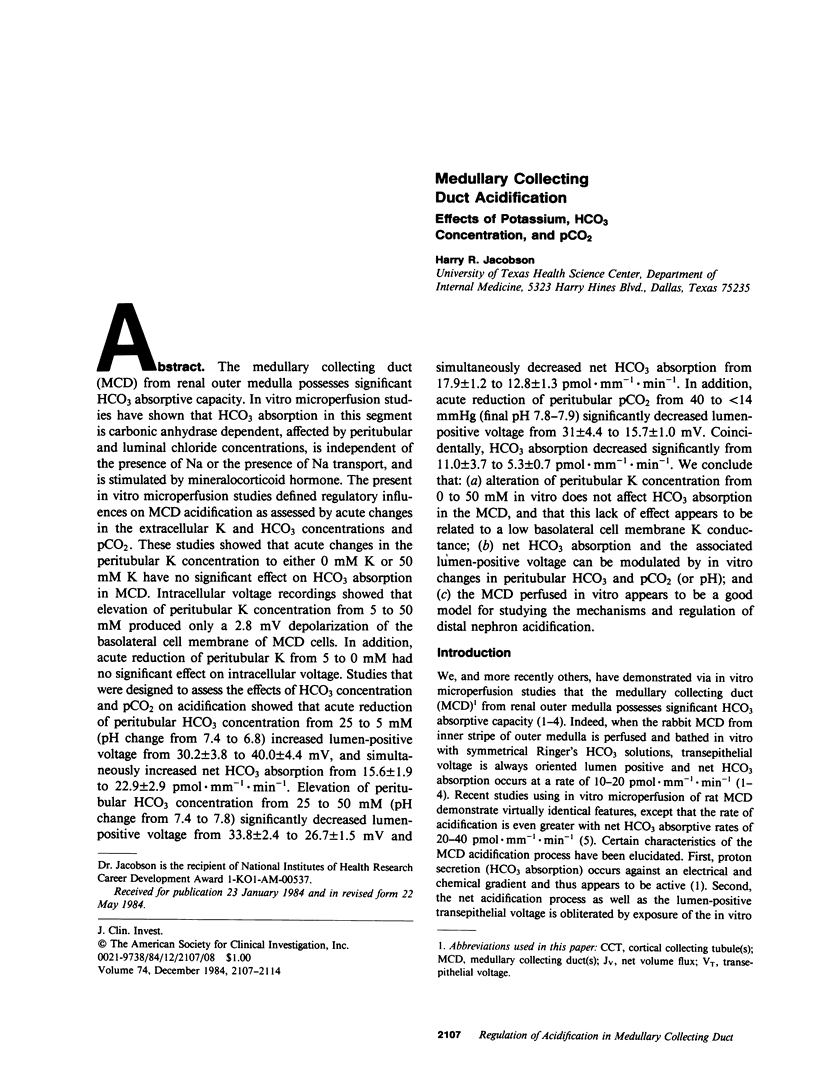
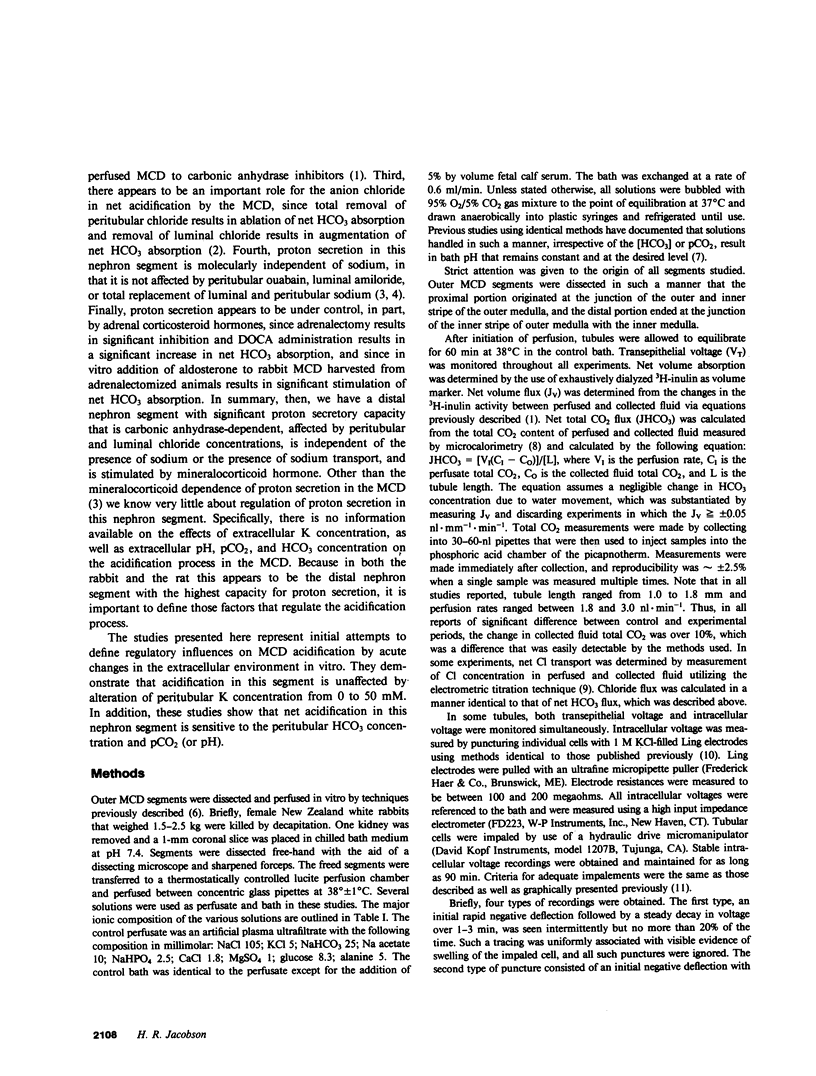
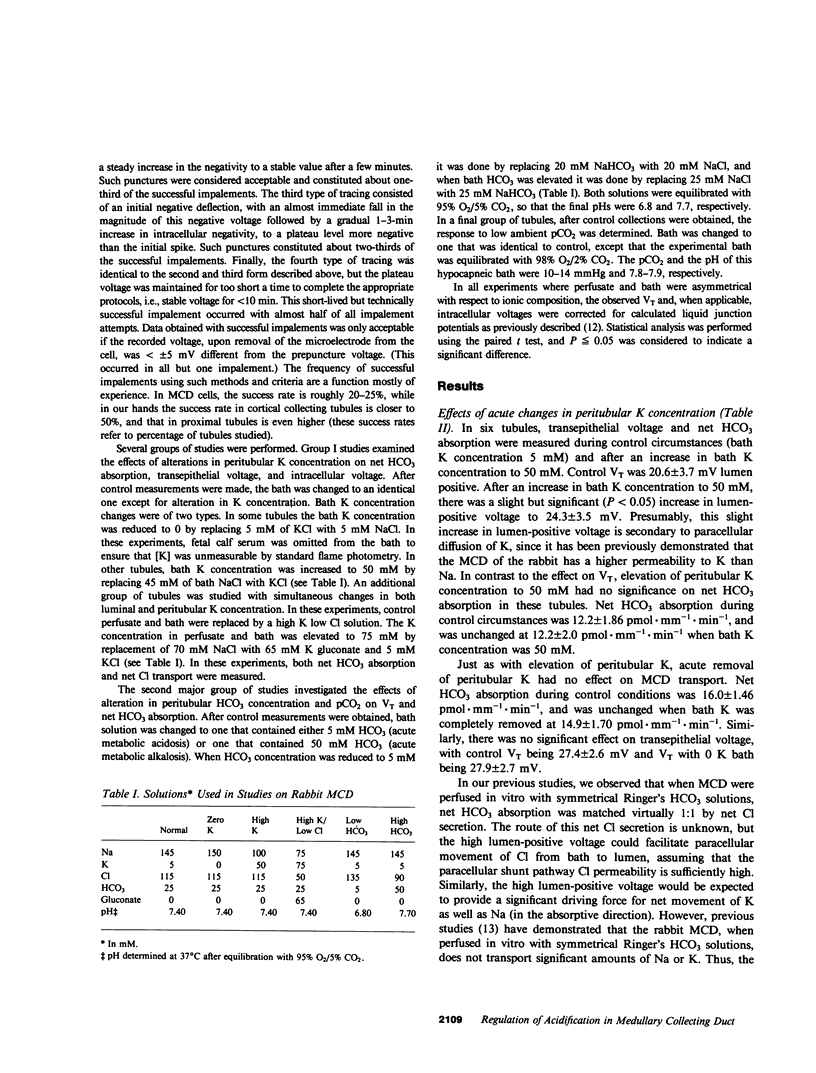
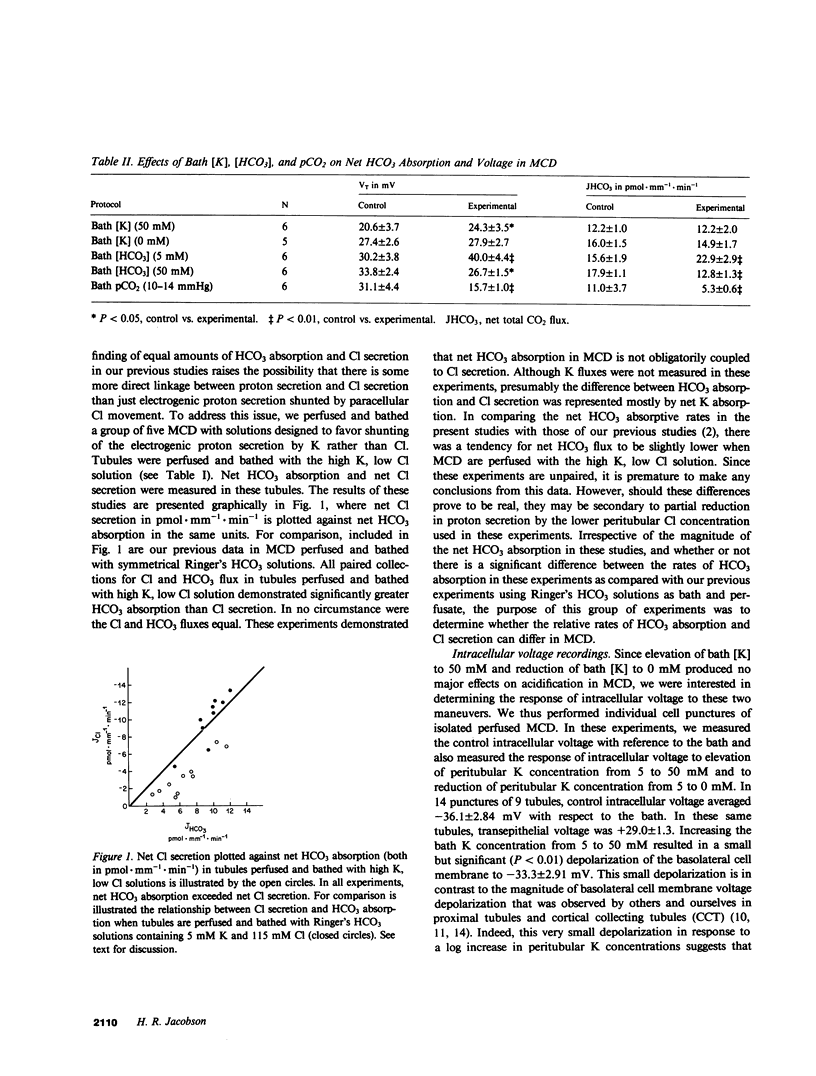
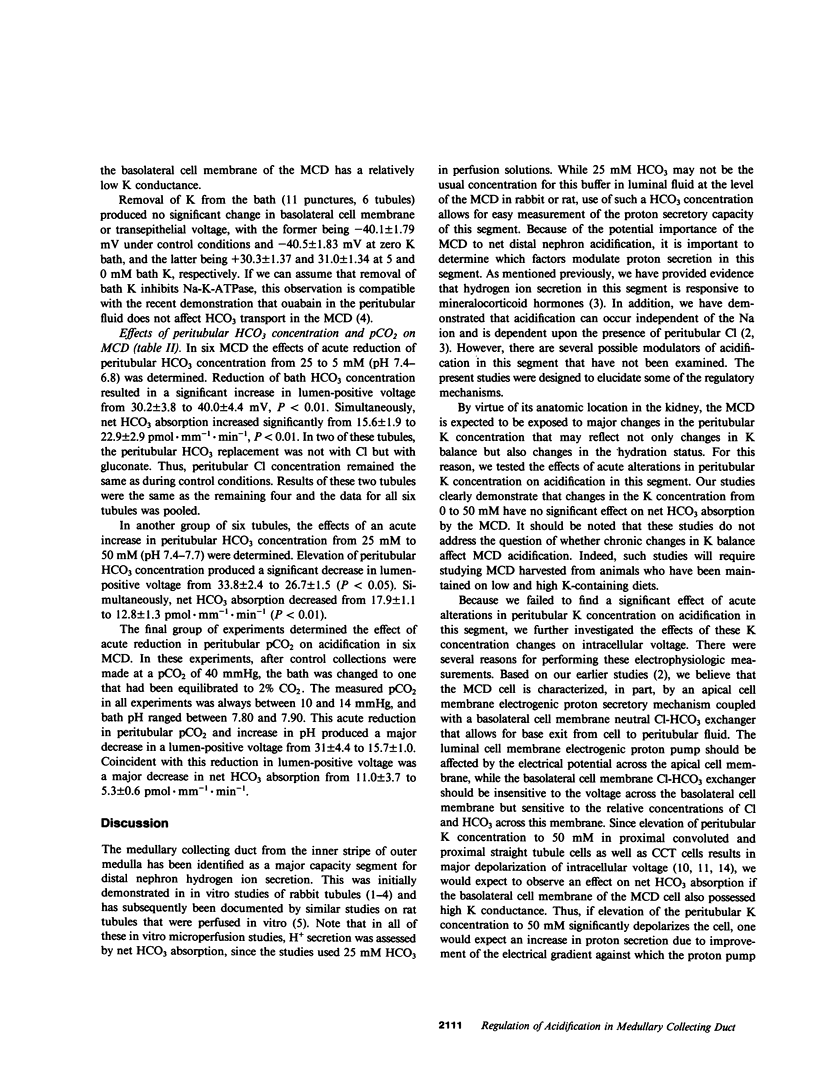
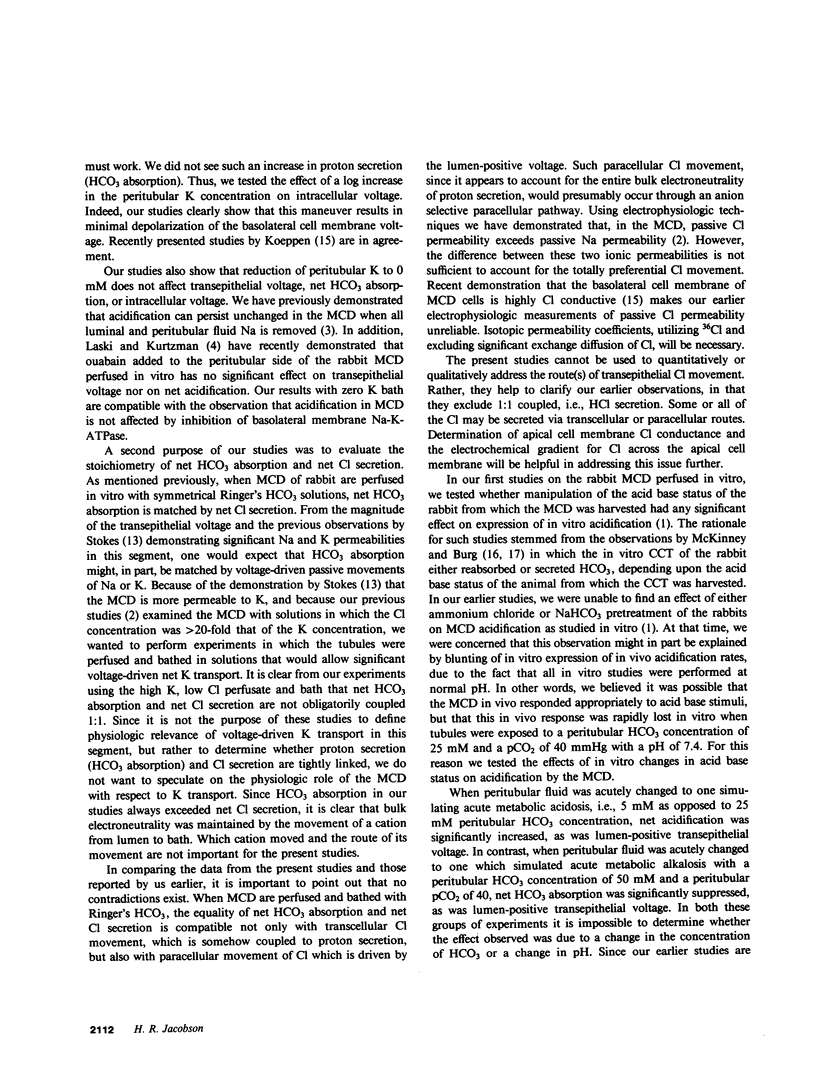
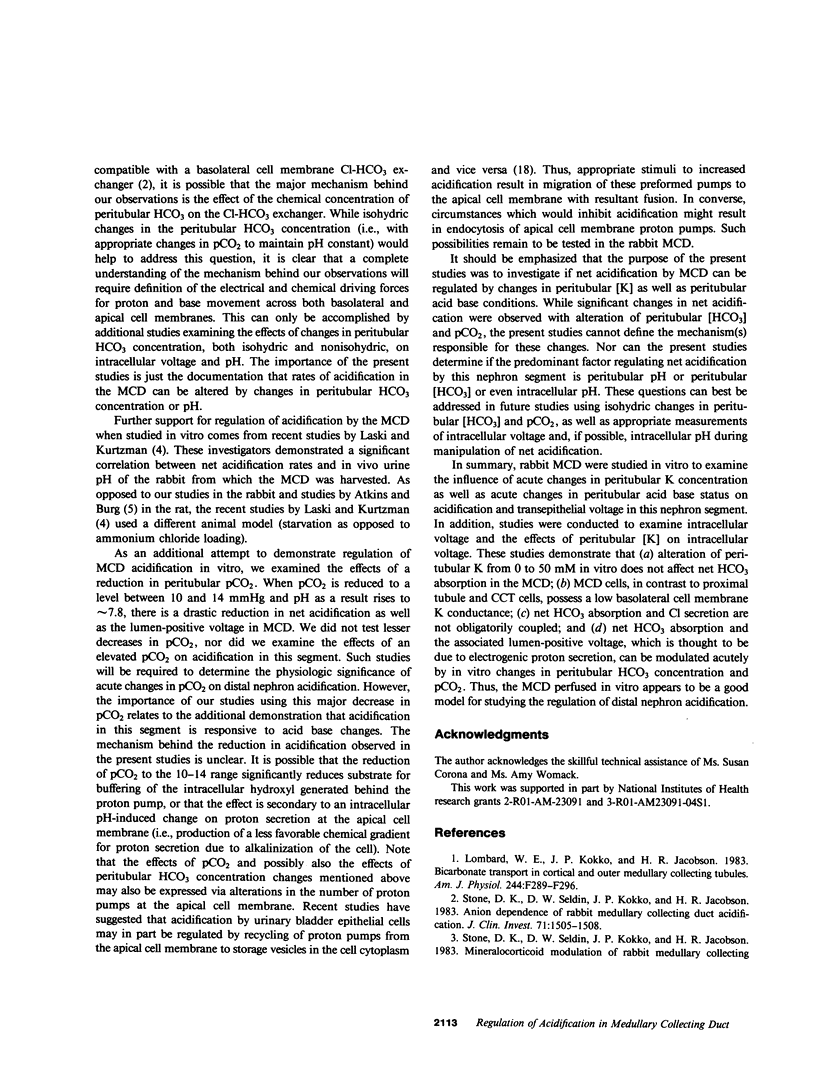
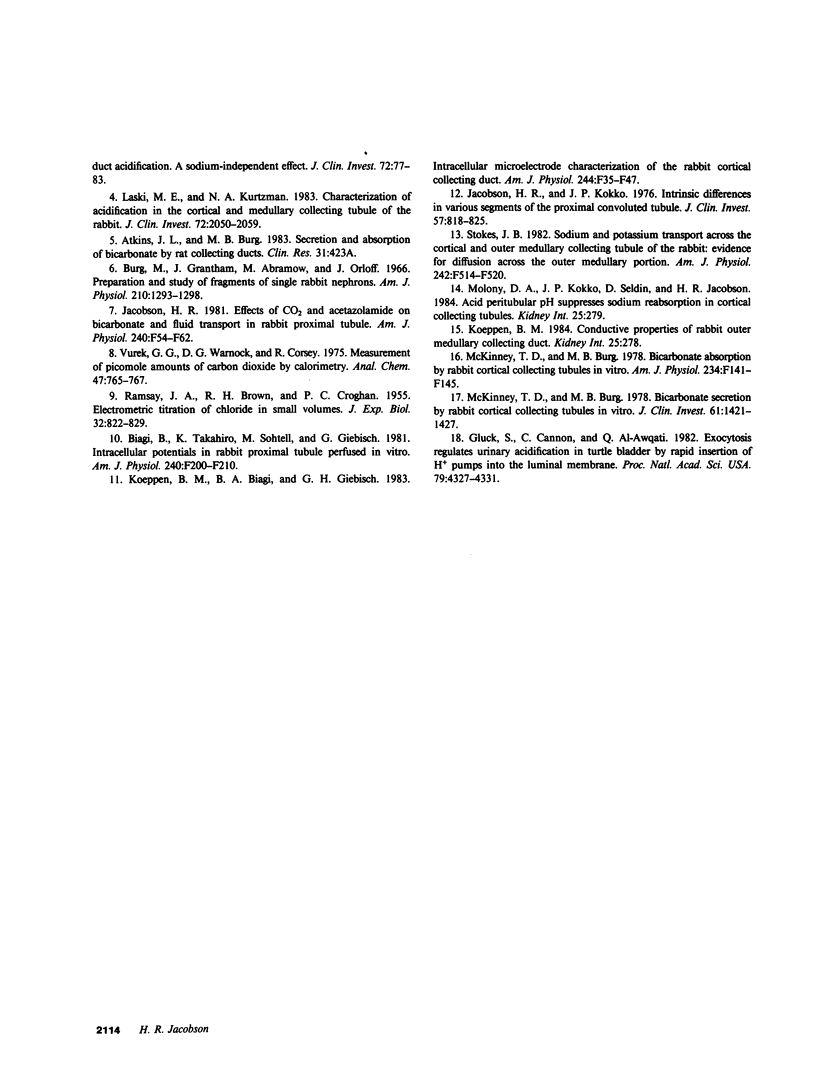
Selected References
These references are in PubMed. This may not be the complete list of references from this article.
- Biagi B., Kubota T., Sohtell M., Giebisch G. Intracellular potentials in rabbit proximal tubules perfused in vitro. Am J Physiol. 1981 Mar;240(3):F200–F210. doi: 10.1152/ajprenal.1981.240.3.F200. [DOI] [PubMed] [Google Scholar]
- Burg M., Grantham J., Abramow M., Orloff J. Preparation and study of fragments of single rabbit nephrons. Am J Physiol. 1966 Jun;210(6):1293–1298. doi: 10.1152/ajplegacy.1966.210.6.1293. [DOI] [PubMed] [Google Scholar]
- Gluck S., Cannon C., Al-Awqati Q. Exocytosis regulates urinary acidification in turtle bladder by rapid insertion of H+ pumps into the luminal membrane. Proc Natl Acad Sci U S A. 1982 Jul;79(14):4327–4331. doi: 10.1073/pnas.79.14.4327. [DOI] [PMC free article] [PubMed] [Google Scholar]
- Jacobson H. R. Effects of CO2 and acetazolamide on bicarbonate and fluid transport in rabbit proximal tubules. Am J Physiol. 1981 Jan;240(1):F54–F62. doi: 10.1152/ajprenal.1981.240.1.F54. [DOI] [PubMed] [Google Scholar]
- Jacobson H. R., Kokko J. P. Intrinsic differences in various segments of the proximal convoluted tubule. J Clin Invest. 1976 Apr;57(4):818–825. doi: 10.1172/JCI108357. [DOI] [PMC free article] [PubMed] [Google Scholar]
- Koeppen B. M., Biagi B. A., Giebisch G. H. Intracellular microelectrode characterization of the rabbit cortical collecting duct. Am J Physiol. 1983 Jan;244(1):F35–F47. doi: 10.1152/ajprenal.1983.244.1.F35. [DOI] [PubMed] [Google Scholar]
- Laski M. E., Kurtzman N. A. Characterization of acidification in the cortical and medullary collecting tubule of the rabbit. J Clin Invest. 1983 Dec;72(6):2050–2059. doi: 10.1172/JCI111170. [DOI] [PMC free article] [PubMed] [Google Scholar]
- Lombard W. E., Kokko J. P., Jacobson H. R. Bicarbonate transport in cortical and outer medullary collecting tubules. Am J Physiol. 1983 Mar;244(3):F289–F296. doi: 10.1152/ajprenal.1983.244.3.F289. [DOI] [PubMed] [Google Scholar]
- McKinney T. D., Burg M. B. Bicarbonate absorption by rabbit cortical collecting tubules in vitro. Am J Physiol. 1978 Feb;234(2):F141–F145. doi: 10.1152/ajprenal.1978.234.2.F141. [DOI] [PubMed] [Google Scholar]
- McKinney T. D., Burg M. B. Bicarbonate secretion by rabbit cortical collecting tubules in vitro. J Clin Invest. 1978 Jun;61(6):1421–1427. doi: 10.1172/JCI109061. [DOI] [PMC free article] [PubMed] [Google Scholar]
- Stokes J. B. Na and K transport across the cortical and outer medullary collecting tubule of the rabbit: evidence for diffusion across the outer medullary portion. Am J Physiol. 1982 May;242(5):F514–F520. doi: 10.1152/ajprenal.1982.242.5.F514. [DOI] [PubMed] [Google Scholar]
- Stone D. K., Seldin D. W., Kokko J. P., Jacobson H. R. Anion dependence of rabbit medullary collecting duct acidification. J Clin Invest. 1983 May;71(5):1505–1508. doi: 10.1172/JCI110905. [DOI] [PMC free article] [PubMed] [Google Scholar]
- Stone D. K., Seldin D. W., Kokko J. P., Jacobson H. R. Mineralocorticoid modulation of rabbit medullary collecting duct acidification. A sodium-independent effect. J Clin Invest. 1983 Jul;72(1):77–83. doi: 10.1172/JCI110986. [DOI] [PMC free article] [PubMed] [Google Scholar]
- Vurek G. G., Warnock D. G., Corsey R. Measurement of picomole amounts of carbon dioxide by calorimetry. Anal Chem. 1975 Apr;47(4):765–767. doi: 10.1021/ac60354a024. [DOI] [PubMed] [Google Scholar]


